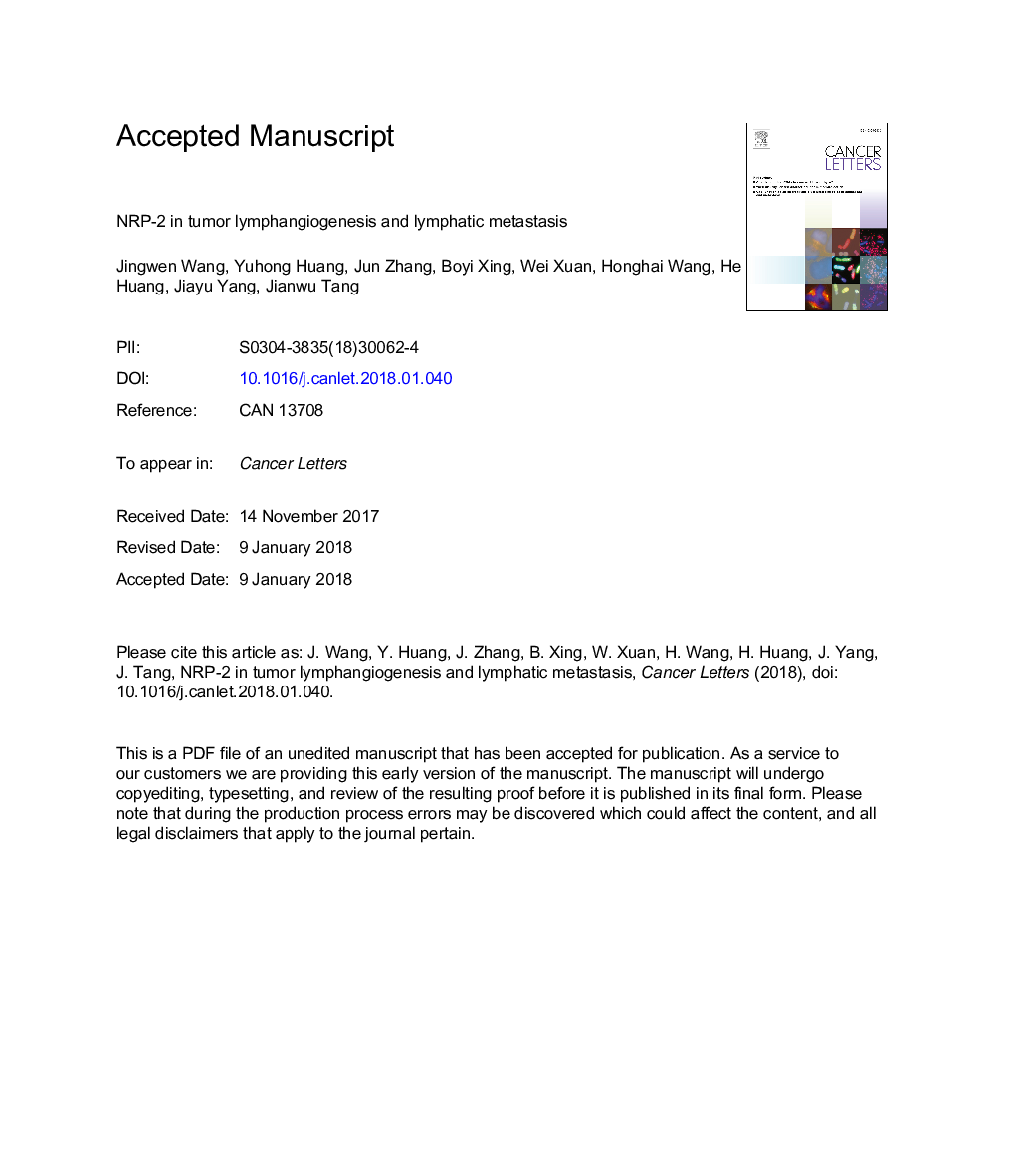| Article ID | Journal | Published Year | Pages | File Type |
|---|---|---|---|---|
| 8434763 | Cancer Letters | 2018 | 19 Pages |
Abstract
Neuropilin-2 (NRP-2) not only functions as a receptor for semaphorins, a family of neural axon guidance factors, but also interacts with VEGFs, a family of vascular endothelial growth factors. As an independent receptor or a co-receptor, NRP-2 binds to ligands VEGF-C/D, activates the VEGF-C/D-NRP-2 signaling axis, and further regulates lymphangiogenesis-associated factors in both lymphatic endothelial cells (LECs) and some tumor cells during tumor progression. Via VEGF-C/D-NRP-2 axis, NRP-2 induces LEC proliferation, reconstruction and lymphangiogenesis and subsequently promotes tumor cell migration, invasion and lymphatic metastasis. There are similarities and differences among NRP-1, NRP-2 and VEGFR-3 in chemical structure, ligand specificity, chromosomal location, soluble protein forms, cellular functions and expression profiles. High expression of NRP-2 in LECs and tumor cells has been observed in different anatomic sites, histological patterns and progression stages of various tumors, especially during tumor lymphangiogenesis and lymphatic metastasis, and therefore the NRP-2 and VEGF-C/D-NRP-2 axis are closely related to tumor development, progression, invasion, and metastasis. In addition, it is important for prognosis of tumor. The studies on NRP-2 targeted therapy have recently achieved some successes, utilizing NRP-2 blocking antibodies, NRP-2 inhibitory peptides, soluble NRP-2 antagonists, small molecule inhibitors and various NRP-2 gene therapeutic strategies.
Related Topics
Life Sciences
Biochemistry, Genetics and Molecular Biology
Cancer Research
Authors
Jingwen Wang, Yuhong Huang, Jun Zhang, Boyi Xing, Wei Xuan, Honghai Wang, He Huang, Jiayu Yang, Jianwu Tang,
